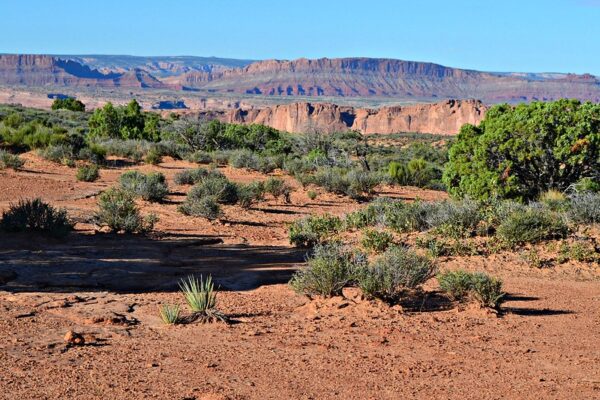Utah, and the West, is in a megadrought. But what does that word even mean?
Megadrought is defined by Utah State University as a severe drought lasting more than 10 years — sometimes defined as up to 20-30 years. But western states have been experiencing extremely dry conditions for over 20 years — since 2000 — so as far a megadrought goes, this is nothing new for us.
What is new is that the drought is getting drier and more intense. In fact, 2021 was the driest and third warmest year on record, and the drought doesn’t show signs of stopping.
In response to these intensifying drought conditions and emptying reservoirs, researchers are calling for increased study of drought: how to forecast it and adapt to it.
Recent Studies on Drought and How to Adapt
Most of the data on drought right now is based on one recent study, published in March of 2022. The study predicted that the current megadrought could go on for eight more years based on tree-ring data from previous droughts.
The study mentioned that in 2021, Lakes Powell and Mead reached their lowest levels on record as a result of the Colorado River flow being at its lowest since 1906. So far the year 2022 has followed these trends of ever-worsening water reserves not just in Lakes Powell and Mead, but also in reservoirs across the state.
The data does seem to suggest that this megadrought is related to human activity, though it is unclear to what extent. Projections predict the drought to go at least until 2023, but the likelihood of it continuing into 2030 and further into the future is also high.
Tree-Ring Data
The most common way to track drought in the West is to use tree-ring data. You have probably heard of this method before:
Each year the tree rings in the stump of a tree “record” the amount of growth that tree has seen. Thick tree rings mean a lot of growth; thin tree rings mean little growth. These “records” go back for as long as the tree has been alive — in the case of the megadrought study, 1,200 years.
Shrubs
On the other hand some studies point to the advantages of studying shrubs in the southwest to better predict drought responses at lower elevations where trees are not present.
One study on shrub adaptation during drought found shrubs in the West increasing their water efficiency in response to aridity and vapor pressure deficit, or how much water is in the air. This increase is higher than in data for ponderosa pines, suggesting that the tree-ring measurements available could be inaccurate at lower elevations.
Shrubs seem to be adapting well to drought, but it is unlikely that this will offset the negatives they will experience going forward.
Previous Megadroughts
Drought data from hundreds of years ago can help us better understand the one we are living through now.
The year 2002 was the driest year on record between 1901 and 2021, but 2021 was the next driest.
A megadrought during the 1500s, up until now, took the prize for worst drought in history. However, the current megadrought has now outlasted it, pushing the longtime winner to second place.
The current megadrought may not have the driest or hottest days compared to past ones, but it is quite a bit longer. Given the average dryness of these years combined, the current megadrought ranks among the five driest periods in history!
How We Adapt to Drought
The megadrought in the West shows no signs of going away. So the best any of us can do is to adapt to the drought. Anything from checking your sprinklers regularly to reusing greywater can help to reduce the effects of drought.
A big part of adaptation is also spreading knowledge. USU, along with other Utah universities, has been working to increase the number of studies done on drought. In addition, researchers, lawmakers and newspapers (like us) are spreading news and techniques, hoping to find and implement better drought measures for tomorrow’s ongoing dry years.
– The Byway
Feature image caption: Shrubs, which seem to adapt well to drought, grow in the red sand in Southern Utah. Courtesy Flickr.
For more tips on how to adapt to drought, read What You Can Do to Conserve Utah’s Water.

